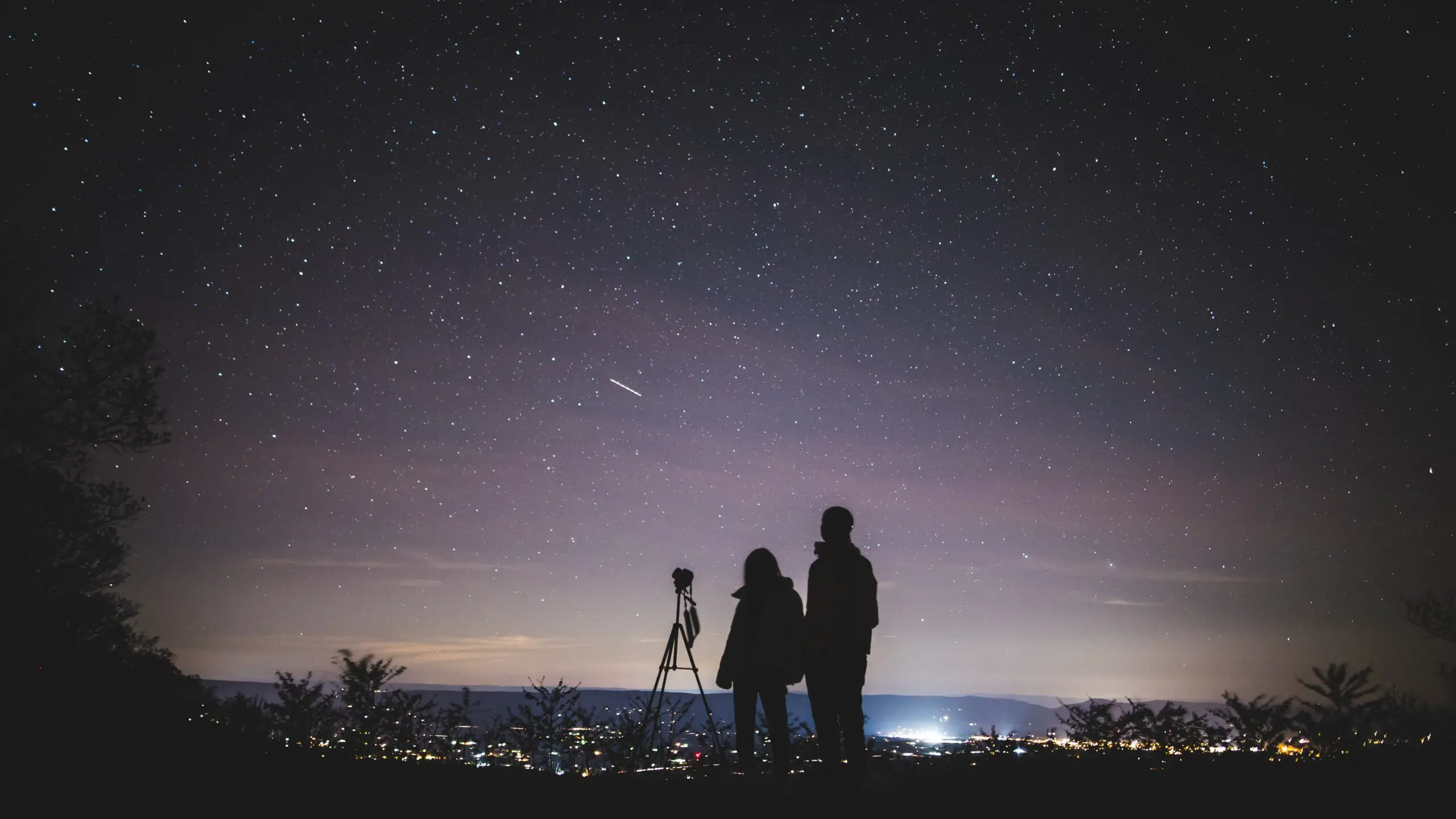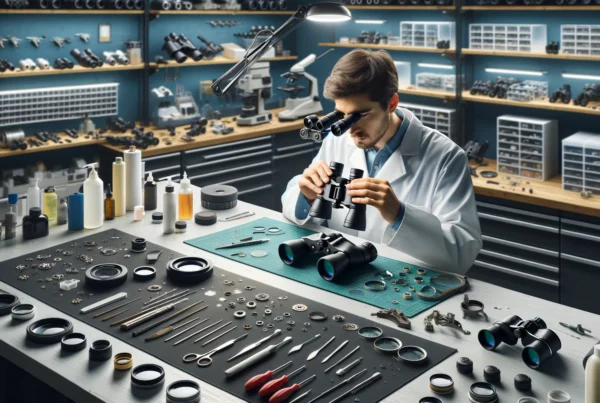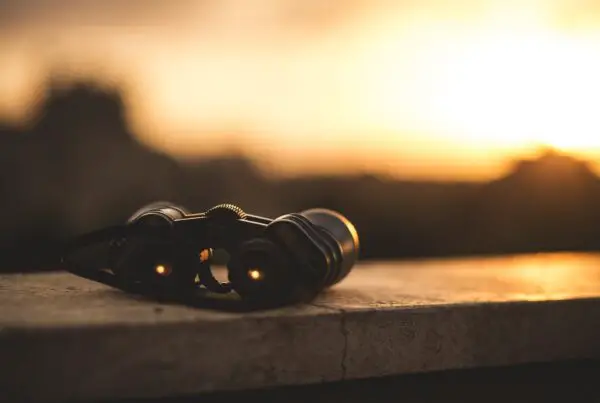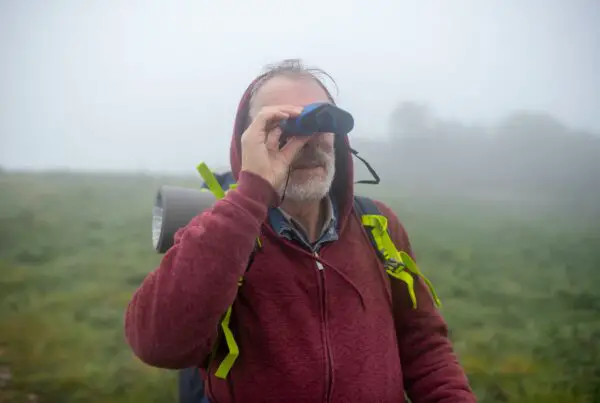Contents
Gaze up at the night sky and let your imagination take flight. Picture a canvas of shimmering stars, a cosmic tapestry that has inspired dreamers, scientists, and adventurers throughout history.
If you’re new to stargazing, binoculars are a great way to explore the night sky. They are portable, easy to use, and less expensive than telescopes. In this beginner’s guide, we’ll cover the basics of stargazing with binoculars, including what to look for in a pair of binoculars, how to use them, and what objects to observe.
The universe above us holds secrets and mysteries that stretch beyond our comprehension, waiting for those curious enough to cast their eyes heavenward.
Choosing the Right Binoculars for Stargazing
Selecting the perfect binoculars is your first step on this astronomical adventure. Explore the world of magnification and lens sizes, learning how these factors influence your view of the night sky. Dive into the differences between roof prism and porro prism binoculars, discovering which design suits your stargazing ambitions.
Discover the importance of weight and size – after all, the best equipment is the one that you’re comfortable using for extended periods.
What to Look for in a Pair of Astronomical Binoculars?
When choosing binoculars for stargazing, there are a few things to consider:
Magnification: Binoculars with magnification between 6 and 10 times are useful for stargazing and are usually light enough to handhold for short periods. For astronomy, go for binoculars that magnify at least 7 times. The highest you’ll want for handheld binoculars is about 10x. If the magnification is higher than that, you likely won’t be able to hold them steady enough to get a sharp image.
Objective lens size: Look for binoculars with larger objective lenses as they gather more light, allowing for clearer views of celestial objects, especially in low-light conditions. Binoculars dedicated to astronomy must have certain features. The best stargazing binoculars will feature big objective lenses (the end aimed at the stars) to allow as much dim starlight as possible through to the observer’s eyes.
Aperture: Binoculars with larger apertures are better for stargazing, as they allow more light to enter the binoculars, making faint objects easier to see.
Field of view: A moderate field of view may work best for astronomy – something like 6 degrees in a 10x binocular.
Weight: Binoculars for stargazing should be lightweight enough to hold steady for extended periods of time. However, heavier binoculars can provide a more stable image.
Comfort: Look for binoculars that feel comfortable in your hands and have adjustable eyecups to accommodate eyeglass wearers.
Price: Binoculars for stargazing can range from less than $50 to several hundred dollars. Consider your budget and how often you plan to use them.
Here are our Best Binocular Options for Astronomy
Preparing for Observations
Stargazing is about more than just peering up at the sky; it’s about understanding the stories and patterns etched across the cosmos. Discover the art of choosing the perfect observing location, away from the intrusive glow of city lights, where stars shine with all their brilliance.
How to Use Binoculars for Stargazing
Once you have your binoculars, it’s time to start stargazing. Here are some tips to help you get started:
Find a dark location: To get the best views of the night sky, you’ll need to find a location away from city lights. Look for a dark sky site near you, using resources like the International Dark-Sky Association’s Dark Sky Places Program.
Get comfortable: Bring a chair or blanket to sit on and dress warmly. Stargazing can be a chilly activity, especially in the winter months.
Let your eyes adjust: Give your eyes time to adjust to the darkness. It can take up to 30 minutes for your eyes to fully adapt to the dark.
Hold the binoculars steady: To get a clear image, hold the binoculars steady. Rest your elbows on a stable surface or use a tripod if you have one.
Sweep the sky: Start by sweeping the sky with your binoculars to get a sense of what’s visible. Look for bright stars and constellations, and then try to find fainter objects like star clusters and nebulae.
Use the right technique: To get the best views, use the right technique. Place the binoculars against your forehead and use your hands to adjust the focus.
Start with easy targets: Start with easy targets like the moon, planets, and bright star clusters. These objects are easy to find and provide great views.
Explore the Milky Way: Sweep your binoculars across constellations close to the Milky Way, such as Cassiopeia and Perseus in winter and through the Summer Triangle asterism in summer, and you’ll be astounded by what you can see.
Take breaks: Stargazing can be tiring on the eyes. Take breaks and look away from the binoculars to give your eyes a rest.
Unveiling Celestial Objects
The Moon, planets, and deep-sky objects await your gaze. Delve into the intricacies of lunar phases and marvel at the details of craters and maria. Get up close and personal with Jupiter’s stripes and the rings of Saturn, transforming these distant orbs into tangible wonders. Traverse the depths of space as you explore star clusters, nebulae, and galaxies – all within reach of your binoculars.
Mastering the Art of Observing
Master the art of observing with finesse. Uncover the secrets of reading star charts and navigating the vast tapestry of the night sky. Learn to adjust your binoculars for the most comfortable view and embrace the art of patience as your eyes adjust to the darkness, revealing celestial treasures you never knew existed.
Capturing the Cosmos through Binoculars
Astrophotography, once the domain of the experts, is now at your fingertips. Learn the basics of capturing the night sky with your binoculars, capturing the Moon’s craters or Venus’ phases through your smartphone’s lens. Embrace the learning curve and witness your own progress as you document the universe’s beauty.
Maintenance and Care
Like any treasured possession, your binoculars deserve care. Understand the nuances of cleaning lenses and safeguarding your equipment from dust and moisture. Discover the proper storage techniques that ensure your binoculars remain ready for your next celestial rendezvous.
Here is a complete Binoculars Care Guide
Evolving as an Astronomer
The stars have a way of igniting passions. Explore the world of telescopes, and as your fascination deepens, consider upgrading your gear to embark on even more detailed explorations. Engage with fellow enthusiasts in astronomy clubs and online communities, sharing experiences and stories that enrich your journey.
Objects to Observe
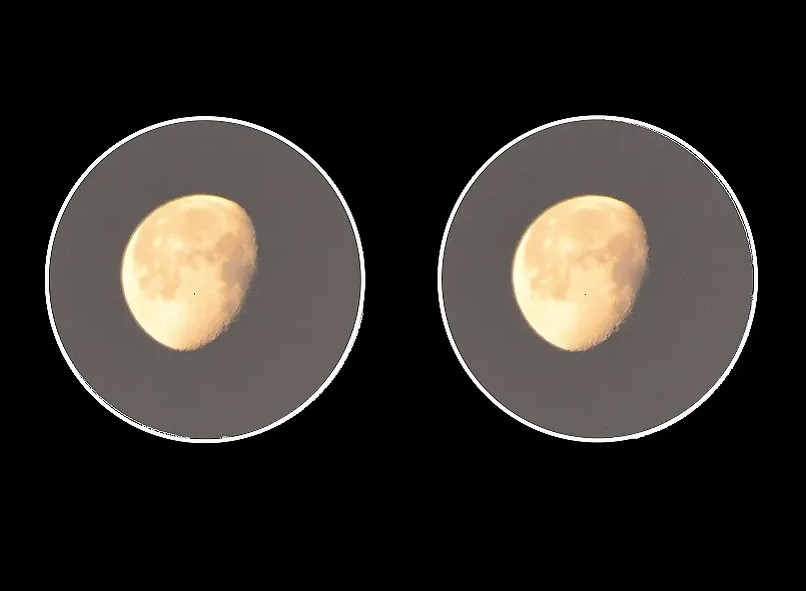
Binoculars can provide great views of many objects in the night sky. Here are some targets to get you started:
The Moon: The Moon is a great target for binoculars. You can see craters, mountains, and other features in detail.
Planets: Binoculars can provide great views of the planets, especially Jupiter and its moons. You can also see Saturn’s rings and the phases of Venus.
Star clusters: Binoculars can reveal many star clusters that are too faint to see with the naked eye. Look for the Pleiades and the Beehive Cluster.
Nebulae: Binoculars can also reveal many nebulae, including the Orion Nebula and the Lagoon Nebula.
Double stars: Binoculars can help you distinguish two stars that are closer together, and even allow you to discern some that are different colors more easily.
Frequently Asked Questions (FAQ’s)
Here are some frequently asked questions (FAQs) and answers about using an air fryer for the first time:
Why should I use binoculars for stargazing as a beginner?
Binoculars offer a comfortable and accessible entry point into stargazing. They’re portable, easy to use, and provide a wider field of view compared to telescopes. Binoculars also allow you to explore a variety of objects, from the Moon and planets to star clusters and galaxies.
What type of binoculars are best for stargazing?
Look for binoculars with a moderate magnification (around 7x to 10x) and a larger objective lens (around 50 mm) for better light-gathering ability. Consider ones with fully multi-coated lenses for enhanced image quality. Both roof prism and porro prism designs work well, so choose one that feels comfortable to hold.
Can I use any binoculars for stargazing, or do I need specialized ones?
While dedicated astronomy binoculars exist, you can use standard binoculars for stargazing, especially if they meet the magnification and lens size recommendations. Keep in mind that specialized astronomy binoculars might have additional features optimized for stargazing.
What’s the best time to stargaze with binoculars?
Stargazing can be enjoyed throughout the year, but the best times are during clear, moonless nights when light pollution is minimal. Planetary observations are often best when planets are high in the sky, while deep-sky objects are better viewed when they’re away from the horizon.
How do I find objects in the night sky using binoculars?
Utilize star charts, mobile apps, and planetarium software to identify celestial objects. Start with bright stars and constellations to orient yourself, then use recognizable patterns to locate specific objects. Practice and patience will help you become more adept at navigating the night sky.
Can I observe planets with binoculars, and what will I see?
Yes, you can observe planets with binoculars! While you won’t see as much detail as with a telescope, you can spot features like Venus’ phases, Jupiter’s moons, and Saturn’s rings. The view will vary based on the planet’s current position and brightness.
Is astrophotography possible with binoculars?
Yes, you can capture basic astrophotos using your smartphone or adapters that attach to your binoculars. Keep in mind that astrophotography with binoculars has limitations in terms of image quality and detail, but it’s a great way to document your observations.
How do I take care of my binoculars?
Regularly clean the lenses using a soft brush or lens cloth. Store them in a protective case when not in use to prevent dust and moisture buildup. Avoid exposing them to extreme temperatures and harsh conditions, and handle them with care to prevent accidental damage.
Are binoculars suitable for observing faint deep-sky objects?
Binoculars can reveal several deep-sky objects like star clusters, bright nebulae, and large galaxies. While they won’t show as much detail as telescopes, they provide a wider field of view that’s perfect for capturing the beauty of these objects.
How do I progress from using binoculars to using a telescope?
As your interest in astronomy grows, you might consider upgrading to a telescope for more detailed observations. Telescopes offer greater magnification and can unveil finer details of celestial objects. Joining astronomy clubs and seeking advice from experienced observers can guide you in making the transition.
Conclusion
Stargazing with binoculars is a great way to explore the night sky. With a little practice, you can find many objects that are invisible to the naked eye. Remember to choose the right binoculars, use the right technique, and start with easy targets. Happy stargazing!

A Binoculars enthusiast, who love exploring skies and watching birds. It is my hobby to collect Binoculars of different kinds and try to explore the world through various lenses. This is all I do to explore happiness by magnifying my beautiful world.

